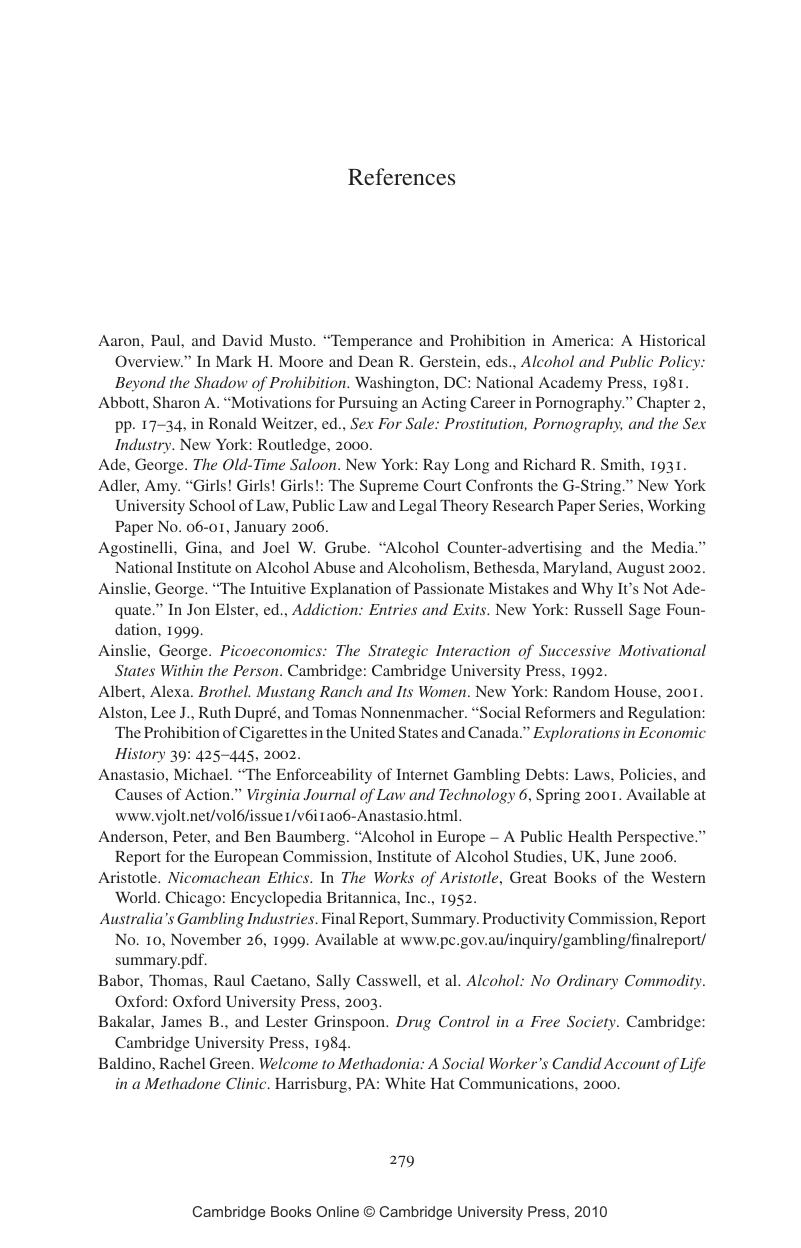Book contents
- Frontmatter
- Contents
- List of tables and boxes
- Preface
- Introduction
- 1 The Harm Principle
- 2 Addiction: Rational and Otherwise
- 3 The Robustness Principle
- 4 Prohibition
- 5 Taxation, Licensing, and Advertising Controls
- 6 Commercial Sex
- 7 The Internet and Vice
- 8 Free Trade and Federalism
- Conclusions
- Appendix: Vice Statistics
- References
- Index
- References
References
Published online by Cambridge University Press: 06 January 2010
- Frontmatter
- Contents
- List of tables and boxes
- Preface
- Introduction
- 1 The Harm Principle
- 2 Addiction: Rational and Otherwise
- 3 The Robustness Principle
- 4 Prohibition
- 5 Taxation, Licensing, and Advertising Controls
- 6 Commercial Sex
- 7 The Internet and Vice
- 8 Free Trade and Federalism
- Conclusions
- Appendix: Vice Statistics
- References
- Index
- References
Summary

- Type
- Chapter
- Information
- Regulating ViceMisguided Prohibitions and Realistic Controls, pp. 279 - 294Publisher: Cambridge University PressPrint publication year: 2007



